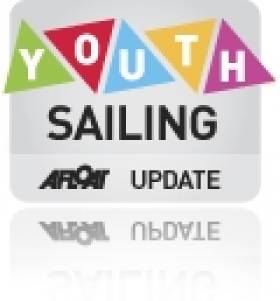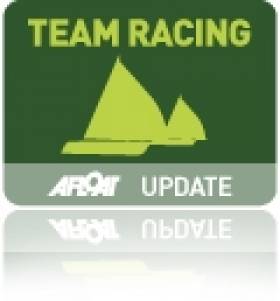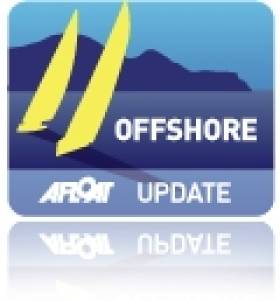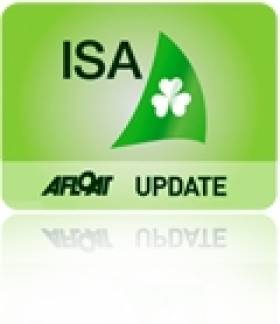Displaying items by tag: sailing
Rio Sailing Waters Crash Renews Concerns Over Floating Rubbish
#Rio2016 - The safety of Olympic sailors training and competing in Rio's dirty waters has been called into question after a 49er pair crashed into a floating object in recent weeks.
As Yahoo! News reports, Breno Osthoff and Rafael de Almeida Sampaio were training on 14 February in Guanabara Bay – the location for the sailing courses in next summer's Olympiad – when they crashed into a discarded plastic box of the kind used to transport fish.
Video of the incident, which captured the duo's boat slamming into the box and causing their dinghy to list, will only add to the chorus of disapproval over the host city's failure to fulfil its promises to clean up its heavily polluted waters.
"The impact broke the keel, damaged the hull, and as we turned we fell on top of the sails and scraped the two sails," said Osthoff of the incident earlier this month. "The damage was very significant and it is just unacceptable."
Yahoo! News has more on the story HERE.
#youthsailing – The Youth Sailing Nationals for Topper, 420, Laser 4.7 and Laser Radial will be hosted by Royal Cork Yacht Club from tomorrow, Thursday 9th to Sunday 12th April 2015. This is an open event for all sailors in these classes writes Claire Bateman.
Today at the RCYC the air was filled with excited chatter and greeting of friends arriving from all over Ireland. Conditions were ideal with bright sunshine and sailors quickly got down to the last minute preparations and checking of their gear. The Optimists were weighed and they had their sails stamped.
The ISA Youth Pathway Nationals will be the selection trials (or part of) for National squads and an indicator (amongst other events) for the Academy. Classes sailing will be 420, Laser Radial, Laser 4.7 and Topper. The IODAI 2015 Optimist Trials will be held in conjunction with, but sailed on a separate course from the Championships. There will not be an Optimist fleet in the ISA Youth National Championships 2015. Tomorrow Thursday the Laser Radials and 420s will commence racing. Tomorrow will also see the beginning of the Optimist four day IODAI Trials with Anthony O'Leary Afloat Sailor of the Year as Race Officer, and Friday will see the commencement of racing for the Topper and Laser 4.7 fleets.
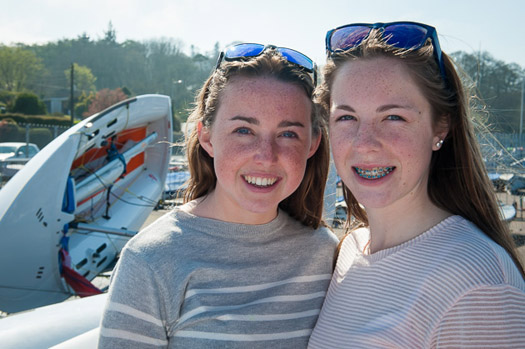

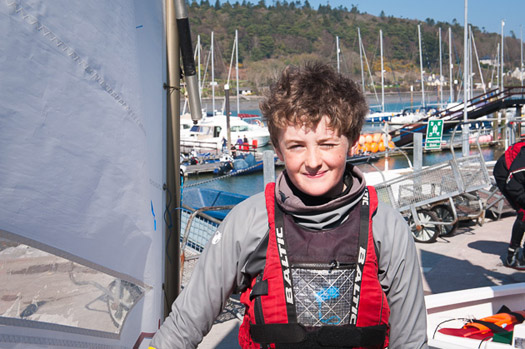

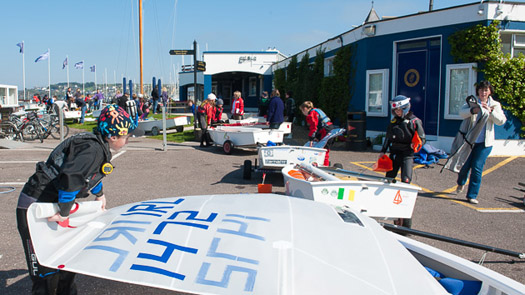
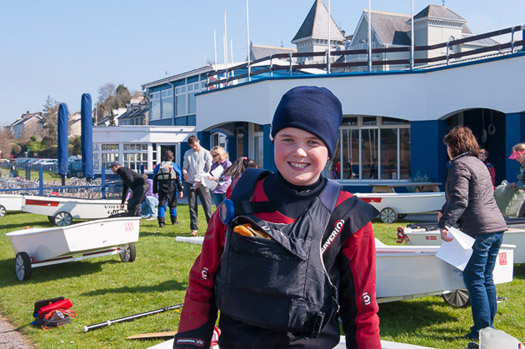
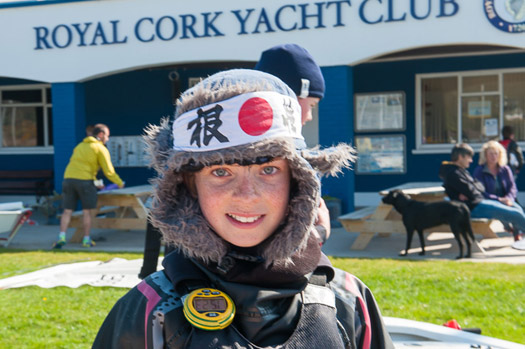
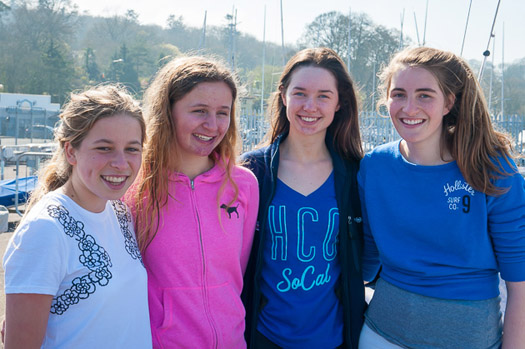
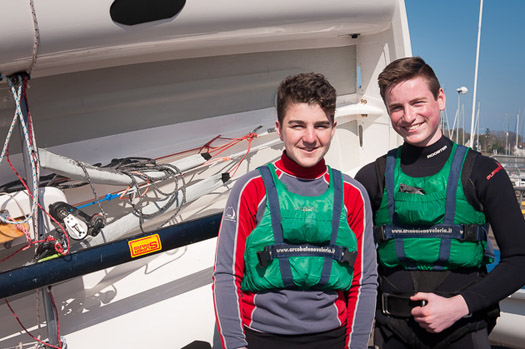
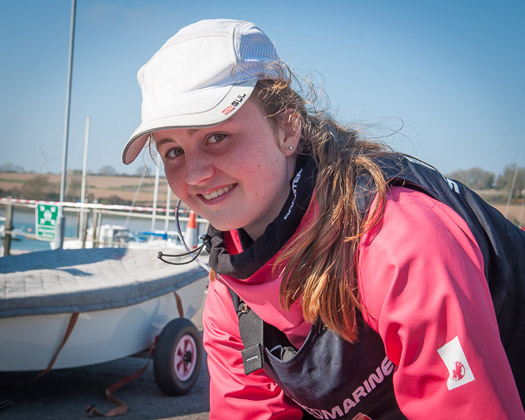
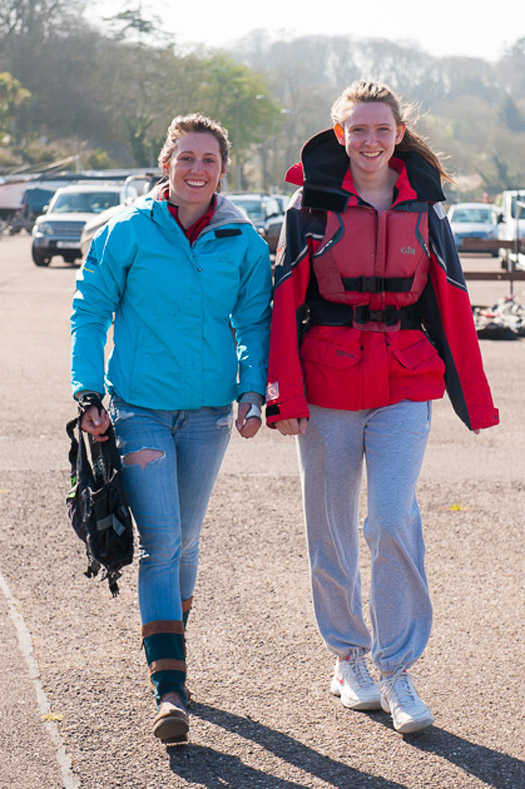
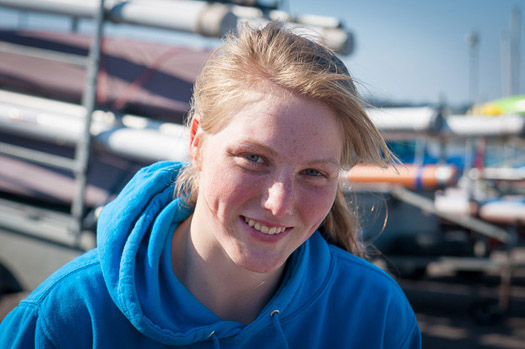

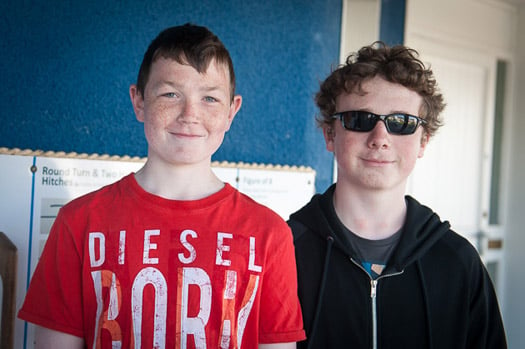
Tall Ships & Sail Training – Ireland's Atlantic Youth Trust Will Give It A Different Spin
#tallships – Rugged sailing in romantic tall ships; the camaraderie of the sea; character development. It's an inspiring combination which has gripped maritime nations for more than a century as sail has given way to more utilitarian sources of power. First there was steam. Then steam in turn was superseded by diesel and even nuclear power. And with each stage, there has been a remorseless drive towards reducing manning levels.
So what on earth is there now to occupy people who, in a former era, might have found a meaningful role in life as crew on board a sailing ship? For with each new development in shipping, we realise ever more clearly that large sailing ships were one of the most labour-intensive objects ever created.
However, we don't need to look to the sea to find areas of human activity where technological development has made human input redundant, and large sectors of the population largely purposeless. It's the general social malaise of our time. So for many years, the majority of maritime countries have found some sort of solution by an artificial return to the labour-intensive demands of sailing ships.
But in an increasingly complex world with ever more sources of distraction and entertainment, does the established model of sail training still work as well as it once did? W M Nixon meets a man who thinks we need a new vision for best using the sea and sailing ships to meet the needs of modern society's complex demands.
Tall Ships and Sail Training........They're evocative terms for most of us. Yet the buzzwords of one generation can surprisingly quickly become the uncool cliches of the next. That said, "Tall Ships" has stood the test of time. It's arguably sacred, with a special inviolable place in the maritime psyche.
So when we see a plump little motor-sailer bustling past with some scraps of cloth set to present an image of harnessing the wind's timeless power, we may be moved to an ironic quoting of Robert Bridges: "Whither, O splendid ship......" But somehow, citing Masefield's "a tall ship and a star to steer her by" would seem to be beyond the bounds of even the worst possible taste.
There's a simple purity about "Tall Ships". It works at every level. Google it, and you'll find the academics claim that it became official with its use by John Masefield in 1902 and Joseph Conrad in 1903, though Henry David Thoreau used it much earlier in 1849. But Conrad being the benchmark of most things maritime in academia, 1903 seems to be set in stone.

We all know what is meant by a true Tall Ship, but as these rig profiles indicate, the proliferation of sail training programmes has led to an all-inclusive approach
Yet at the vernacular level, it has been there much longer than any of them. There's a bit of maritime meteorological lore which our academics would probably dismiss as vulgar doggerel, but I've found it still moves me. When far at sea, with the underlying swell increasingly in evidence and the weather conditions which it describes clearly developing overhead, inevitably you'd remember this little couplet:
"Mackerel sky and mare's tails,
Make Tall Ships carry low sails".
It's not Yeats. But when you're on a formerly blue sea now turning grey and far from anywhere in a 25-footer, it's a little thought which can still make the hairs stand up on the back of your neck. And it's that mention of "Tall Ships" which gives it the added resonance. So things stand well with the phrase "Tall Ships". But what's the word on the continuing viability of "Sail Training"?
"I'm fed up with the constant use of the term "Sail Training". It's bandied about so much it has become meaningless. And always talking about "Sail Training" limits the scope of what we're trying to do. If we could find some useful phrase to replace "Sail Training", but something which is also more visionary than the very pedestrian "Youth Development" which is sometimes replacing it, then maybe we could go a long way to capture the imagination both of our potential supporters, and of the young people we hope will want to come aboard the ship".
The speaker is Neil O'Hagan, busy Executive Director of the Atlantic Youth Trust, which is actively developing ways and means of building a 40 metre sailing ship which will serve all Ireland in a wide variety of functions. And as he has immersed himself in this challenging project when he is clearly a very able person who could name his price in many roles in high-paying large corporations, it behoves us to pay attention.
We have been skirting the AYT and its project several times here recently. But as we gradually emerge from the recession and see what is still standing, for some reason with every passing week we find it ever more disturbing that the Irish Sail Training Brigantine 84ft Asgard II was lost nearly seven years ago by foundering, and the Northern Ireland Ocean Youth Trust's 60ft ketch Lord Rank was lost after striking a rock five years ago.
Far from being swept under the carpet, it's a double whammy which has to be faced and dealt with as 2015 rolls on with the biggest Tall Ships assembly ever seen in Ireland coming to Belfast, and not an Irish Tall Ship worthy of the name to represent us.

The popular image of Tall Ships is a crowded port with a fun-filled crowd...............
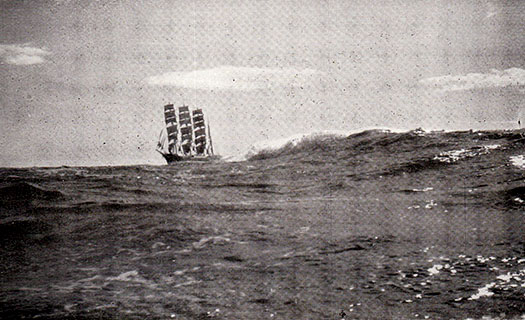
.....yet for many old salts, the true image is the lone ship at sea, going about her business. This photo of a four-masted barque was taken from a small cruising boat in the 1930s
But an ideas-laden shooting of the breeze with O'Hagan soon shows that we're going to have to learn to think a long way out of the box before we begin to meet the demanding expectations of this man and his board of trustees and directors, and the much-anticipated presence of the Tall Ships in Belfast is only a trigger to help activate a much more complex vision. Neil O'Hagan hopes not only to be instrumental in the creation of a new Irish sailing ship, but he also hopes to change the way in which we perceive such a vessel, and our expectations of the way she will be used.
In our initial blog on this back on January 17th, we thought we were making a tellingly adverse point in suggesting that the barquentine Spirit of New Zealand - which the AYT reckons will provide the best model for the development of their project – is not so much a sail training tall ship as we know it, but rather, with her large complement of 40 "trainees", she's more of a floating schoolship which happens to set sails.
Far from being blown out of the water by this "damning" criticism which I and others had voiced, O'Hagan was delighted that we'd lit upon this aspect of the plan. "Old-fashioned sail training has had its day" he says. "When education authorities and social service bodies and welfare funds and philanthropic organisations are looking for some way to provide interesting, satisfying and ultimately long-term-beneficial experiences for young people of all backgrounds and varying states of mental health including the very happily normal, they expect a much broader curriculum than is provided by the traditional sail training model".
"And come to that, so do the young people themselves. If sailing is genuinely their great leisure interest, they'll be into it already at a personal level among like-minded friends. But if they're more typical young people of today, they'll have a wide range of interests, and during the ten day cruises which we hope to make the backbone of the new ship's programme, the sailing will only be part of it."
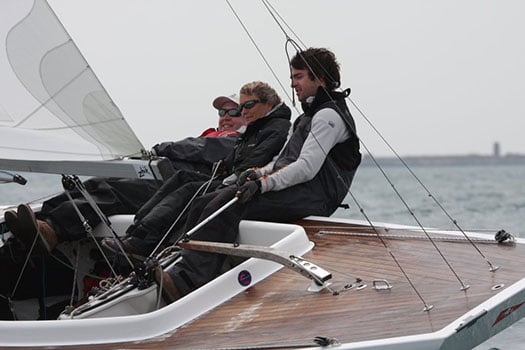
Away from the day job - Neil O'Hagan helming a Dragon
Its not that O'Hagan is anti-sailing. Far from it – he has been seen in the thick of things in the midst of the International Dragon Class in recent years. But a good liberal education with time in the Smurfit Business School in UCD and extensive family links all along Ireland's eastern seaboard north and south, plus direct business experience in both Dublin and Belfast, give him a breadth of vision to provide the AYT with a real sense of purpose.
The Atlantic Youth Trust has been quietly building itself since it emerged from a representative workshop researching the building of a sailing ship for Ireland, held in Dublin Port in the Spring of 2011. From that, a Steering Group of Lord Glentoran and Dr Gerald O'Hare from the north, and Enda O'Coineen and David Beattie from the south – all of whom had worked together before on other north-south youth sailing projects – was set up, and they commissioned a professional consultancy group – CHL Consulting of Dun Laoghaire – to work with them in producing a Vision & Business Plan, which eventually ran to 96 detailed pages.
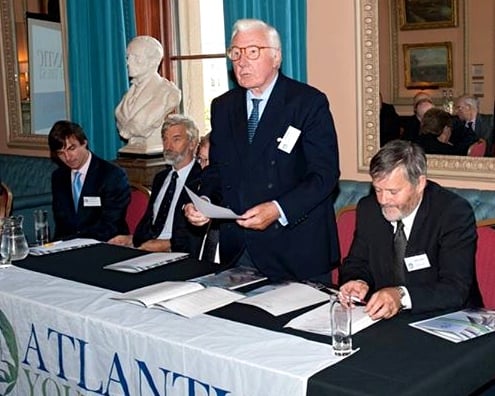
The Chairman Lord Glentoran (Gold Medallist at the 1965 Winter Olympics) at the AGM of the Atlantic Youth Trust with Executive Director Neil O'Hagan (left), Sean Lemass and Director Enda O'Coineen (right)
In due course, the Atlantic Youth Trust emerged with Olympic Gold Medal veteran Lord Glentoran as Chairman. And with Neil O'Hagan as Executive Director, the show was on the road with the detailed worldwide investigation of 25 successful educational schemes involving sailing ships - note we've dropped that "sail training" tag already. And in New Zealand they found something that was really new, something that fell in with their view that the double loss of the Asgard II and the Lord Rank provided an opportunity for a truly fresh look what a national sailing ship might be and do.
It's an extraordinary place, New Zealand - particularly from a maritime point of view. Far from seeing their isolation as a drawback, they use it as an advantage for fresh thinking. And they don't cling to time-hallowed ways brought over from "the old country". On the contrary, being in a new country is seen almost as an imperative for trying new ways and ideas, hence they're at the sharp end of top events like the America's Cup.
And as they were far from the fleets of established tall ships in Europe and America, with the Spirit of New Zealand they had to develop new ways of using a vessel which would spend much of her time cruising their own extensive and very varied coastline on her own, distant from the Tall Ship sailfests which are such a feature of the programme in the more compact and crowded parts of the world.

Spirit of New Zealand is barquentine-rigged
Thus by geographic necessity. New Zealand is ahead of the curve in developing ways of contemporary validity in the use of large sailing ships. We all hear of what a marvellous party the Tall Ships will activate in Belfast, just as they've done before in Dublin, Cork and Waterford. But hold hard just a moment. Isn't sail training aimed at young people mostly between the ages of 15 and 25? Surely their central involvement in vast open air quayside parties - with the inevitable underage alcohol intake possibilities – is totally at variance with the healthy idealism of the concept?
For sure, the organisers of modern Tall Ships Festivals go to enormous effort to ensure that they're genuinely family-friendly events. But the ancient traditions of sailors in port can be difficult to escape. So when you've a proposed programme which is essentially based on recruitment through continuing contact with secondary schools and similar age cohorts – as is the case with the Atlantic Youth Trust project – then it becomes increasingly desirable to have a ship which is large enough to be self-sufficient, with a viable way of onboard life built around large shared areas, such that the traditional waterfront-oriented harbour visits will no longer be such an important part of the cruise programme.

Splendid isolation. Spirit of New Zealand in an anchorage remote even by New Zealand standards
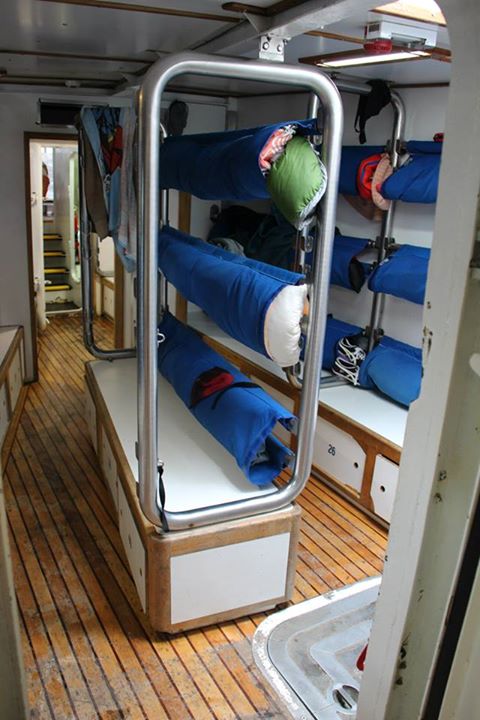
Packing them in....as she carries a crew of 40 trainees, and with space required for extensive communal areas, Spirit of New Zealand's bunks are efficiently planned
Of course the new vessel will take part in Tall Ships Races and Tall Ships Festivals, and of course she'll make the occasional ambassadorial visit, both along the Irish coast and abroad. But with the underlying philosophy of the ship being largely self-sufficient of shoreside distractions other than when they're environmentalist and educational ventures, sometimes with an expeditionary element, then the more gregarious aspects of her yearly routine will be kept well in perspective, and everyone will be the better for it.
As it's essentially a cross-border venture, equal funding from the two governments – each of which it is hoped will put up 30% of the capital expenditure - is anticipated, and with a fresh tranche of Peace Process money on the horizon, the resources are gradually building as people get used to the idea. There has also been much technical background research, and leading naval architects Dykstra of The Netherlands are on the case with an impressive scenario, for as Trustee and Director David Beattie has put it, this one isn't going to be cobbled together, it's going to be a "best in class project".
As the planned use of the vessel is essentially civilian, she will be Ireland's sailing ship without being the national sailing ship. There's more than a slight difference to the Asgard situation. In many other countries, the most impressive tall ships are part of the naval service, but in Ireland we have a Naval Service sailing vessel already, she is the ketch Creidne which was the national sail training vessel between the decommissioning of the first Asgard in 1974 and the commissioning of Asgard II in 1981. In recent years, she has had a major refit and is now actively sailed, but as Ireland's Naval Service is so essentially Cork-based, the Creidne is very much part of the scene in Cork Harbour and the Naval Base at Haulbowline.
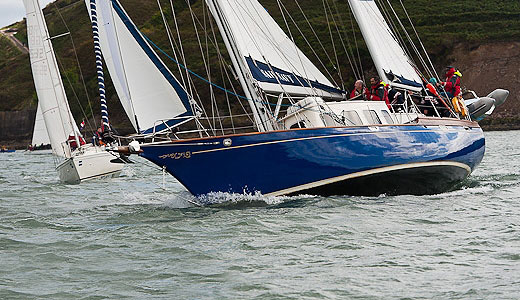
The Naval Service have Creidne for sail training purposes for their own personnel. Photo: Bob Bateman
In fact, although the Atlantic Youth Trust does have a Cork element to it, and advisers include several leading figures in the Cork marine industry, the reality is that it is first and foremost a cross-border enterprise between offices in Dublin and Belfast.
This means that Cork – which is the true capital of maritime development in Ireland, and I mean that in all seriousness – is an associate port to the Atlantic Youth Trust project, rather than a central pillar of it. But I don't think the people of Cork would wish to have it any other way. When I was in the southern capital for the fund-raiser for the new National 18 class development a month or so ago, Class President Dom Long kicked off proceedings by explaining how it was the Corkonian sense of independence which had inspired the mighty leap in National 18 design. He did this by showing a map which neatly illustrated the Cork sailor's view of Ireland.

The Cork sailor's view of Ireland
It says everything. But I don't think the Atlantic Youth Trust should lose any sleep over the fact that they might be seen as being on a Dublin-Belfast axis from which Cork is as usual going its own sweet way. 'Twas ever thus. And anyway, in the end the Corkmen will probably provide many of the officers for the proposed new vessel to which we wish, on this fine Easter Saturday morning, the very fairest of fair winds.
#teamracing – This year, Trinity Sailing hosted the annual Colour's match at Grand Canal Dock, where the six sailing teams of UCD and Trinity competed against each other writes Amelia O'Keeffe of Trinity Sailing Club.
Traditionally the event takes place in Dun Laoghaire harbour but after the success of last year's match, which took place on the River Liffey, Trinity decided to take the event to another new and unique location – Grand Canal Dock. The event has been made possible by the kind support of Dubarry of Ireland.
Racing began at 9.30a.m. on Saturday March 21st. The weather was ideal for sailing, with a strong Easterly breeze and lots of sunshine.
TCD6 and UCD6 took to the water first in a best of five head-to-head. UCD secured a win with 3 races won to 2.
Then it was TCD5's turn to take on UCD5, where Trinity secured a great victory with a 3-0 win.
Due to time constraints we then moved in to best of three racing. UCD4 beat TCD4 with a 2-0 victory. Next the third teams took to the water and managed to win their first two races securing another win for Trinity.
TCD2 vs. UCD2 saw the racing return to best of five. TCD2 won with a 3-1 score.
The next two sets of races were the traditional Alumni and Ladies' races. UCD Alumni beat TCD 2-0 in a best of three and the Ladies of UCD beat those of Trinity with a 1,2,3 in a single race.
The last racing of the day would be the decider of the winner of Colours' 15 when the two first teams raced against each other. TCD1 won the first race with a 1,36, following it up with a 1,2,5 finish in the second race. UCD fought back in the third race, securing a win with a 1,2,6. Everything was very tense as the teams crossed the start line for the next race. Trinity managed to start with an outstanding 1,2,3, finishing with a 1,2,4 securing the title for the second year in a row of Colours' winners.
We had plenty of spectators come down to watch the racing and listen to music from Nick Nowlan and Chris Raymond. Lunch deals were kindly provided by Donnybrook Fair. The view of the racing was excellent, with even the Viking Splash tours stopping to watch!
An event such as this does not happen on its own so there are many people we need to thank for making this happen including Dubarry of Ireland for sponsoring the event, Harry Crosbey and Michael O'Leary for their help in securing the on-land licenses for the event, Mark Clarke, the dockmaster, for his help with getting the ribs through the locks and managing the Viking Splash, Shane Anderson from Waterways Ireland for the on-the-water licenses, DUCAC for their support in all aspects of organising the event and the many people we had helping on the day including the jury, committee and finish boats, photographers and helpers.
We hope that the event highlighted the potential and the importance of University racing and Team Racing in Ireland and that all who took part in the event or came down to watch enjoyed it, we certainly did!
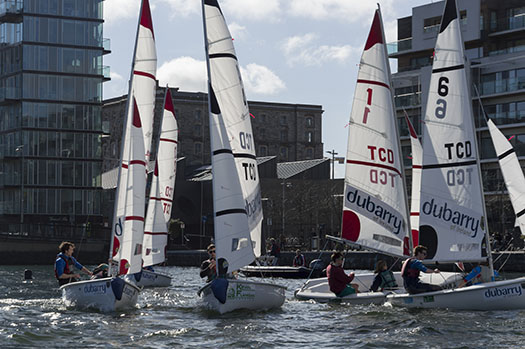
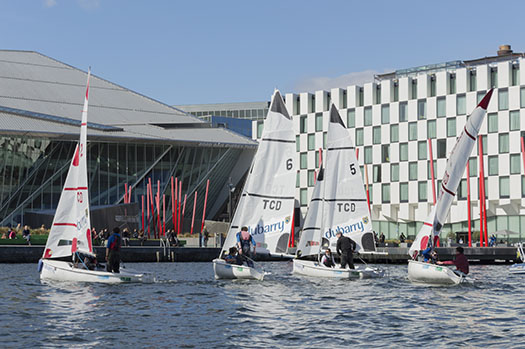
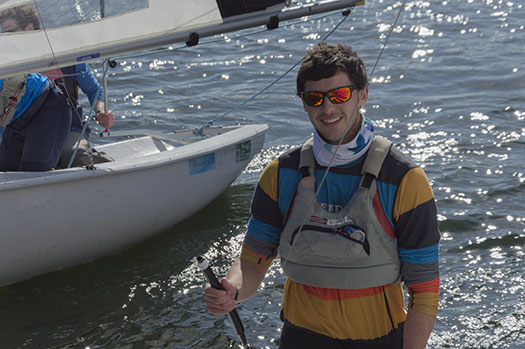
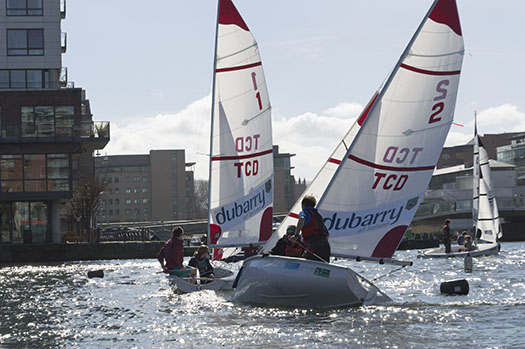

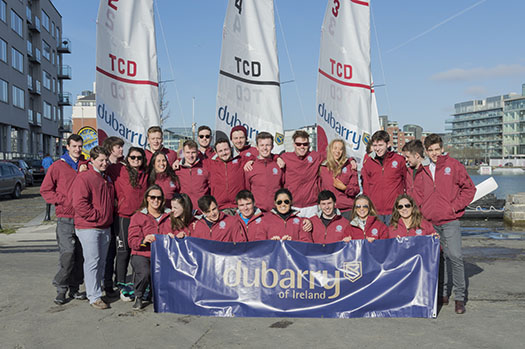


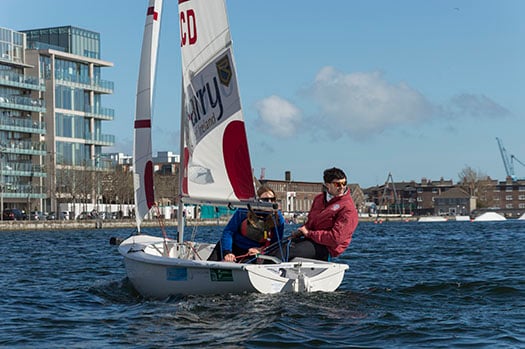
#tallship – With St Patrick's Day almost upon us, the westward trek across the Atlantic in search of American benevolence and funding for worthy objectives can become a very crowded pilgrimage. Among those looking for meaningful support for their pet projects, there will likely be proponents of some sort of new Tall Ship to replace the much-mourned brigantine Asgard II, and the ketch Lord Rank, both of which foundered in 2008 to leave Ireland - north and south alike - bereft of national sail training vessels.
Since then, there have been re-groupings of those who support the admirable concept of sail training for young people. In all, there may be as many as five different bodies on the island of Ireland which now provide access to the international programme. Coiste an Asgard itself was wound up in 2011, but it was immediately re-born as the Dublin-headquartered Sail Training Ireland, the national authority which carries the imprimatur of Sail Training International, the global body which co-ordinates and regulates all sail training.
The other main organisation, often functioning in tandem with Sail Training Ireland, is the Atlantic Youth Trust. It has offices in both Dun Laoghaire and Belfast, and has as its primary objective the construction and commissioning – for all Ireland – of a Class A 40-metre three-masted barquentine. WM Nixon continues with the story.
When we carried a history and analysis of Ireland's involvement with the International Tall Ship and Sail Training movement on this site on January 17th, the immediate response was formidable, and in favour. It continues to register hits at a rate which shows that the maritime community in Ireland has a real wish to see our own proper tall ship.
To achieve this ambition, in terms of having a clearly outlined plan the Atlantic Youth Trust is way ahead. With leading personnel from many parts of Ireland on its high-powered board of Trustees and Directors, the concept - originally inspired by Enda O'Coineen and John Killeen of Galway – is already becoming very complete.
Executive Director Neil O'Hagan and other have researched globally in order to analyse the success of more than two dozen national sail training schemes, and they have concluded that the best model to learn from is the Spirit of Adventure Trust in New Zealand, which functions through training based around the barquentine Spirit of New Zealand, which at 45.2 metres in "sparred length" is steel built registering at 184 gross tons, and carries 40 trainees.
The funding concept on the capital outlay for building the new ship for Ireland will ultimately rely on a total of €15 million being put up jointly by the two governments in the interests of inter-community and cross-border co-operation. Although the current turmoil in the Northern Ireland political administration might temporarily impair the onward progress of the plan, it seems to have a certain inevitable momentum, and highly-regarded Netherlands-based Dykstra Naval Architects have been retained on the project, as have their associates at Damen Shipyards, who may supply the vessel in flatpack form for final construction in Ireland.
As to running costs, the AYT point out that it will come out of current spending, as the vessel by nature of its work will be able to tap into government funds for social welfare and other youth schemes.
Faced with such a juggernaut of ideas, energy, contacts at top government level, and sheer enthusiasm, it seems churlish to question the validity of what is, after all is said and done, a magnificent project. But there are many in Irish sailing in general and sail training in particular who are concerned about the thinking on which it is all based.
To begin with, while we all admire the maritime spirit of New Zealand, does it make sense to draw conclusions for Ireland from a successful scheme in what is essentially a very isolated island nation? Ireland may be an island nation, but it's clearly wide of the mark to describe us as isolated, and this is reflected in the pattern of tall ships visit. If just six tall ships turn up at one port in New Zealand, it's regarded as a major event. But if less than sixty tall ships turn up at this year's Tall Ships Festival in Belfast at the beginning of July, then it will be regarded as a non-event.
In other words, Spirit of New Zealand usually functions in relative isolation, so it is not sail training as we know it in Europe. In fact, she is more of a floating school cum boot camp which happens to set sails, and in order to keep her very numerous trainee complement of 40 busy, while cruising in New Zealand waters (which she does nearly all the time), she is escorted by a large rib which frequently conveys the trainees ashore for land-bound ventures which sometimes out-balance their sea time.
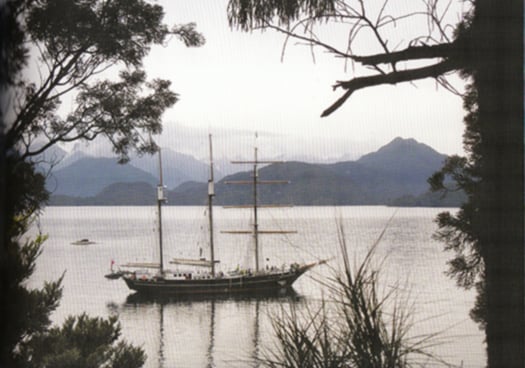
Alone, all alone.....the Spirit of New Zealand in a remote inlet on New Zealand's South Island. With forty trainees and a relatively easily-handled rig, she has a programme whch includes much shoreside activity. Photo courtesy STI
It's a very attractive programme in the New Zealand context, as they have many remote coastal areas which are virtually uninhabited and ripe for shore adventures which will not conflict with the rights of local inhabitants. But in Ireland and much of Europe such a programme would immediately meet problems, and for Ireland it makes more sense to follow the European pattern which puts an almost total emphasis on voyaging and sail training races.
Were a heavily-crewed vessel such as Spirit of New Zealand to do the European programme, there simply wouldn't be enough work for the 20 trainees on each watch to keep them happily occupied for long periods. Ideally, trainee tall ships are extremely labour-intensive for all hands, and in Europe that's the way it is done, but it needs what amounts to individual attention for each trainee.
So it's difficult to escape the conclusion that one reason for the attraction of the New Zealand scheme for the Atlantic Youth Trust is that it wins out in the numbers game. Forty young people taken out of troubled and aimless environments ashore, and sent away together on a voyage, is an impressive amount of social problems temporarily sorted in one fell swoop.
But will it be as behaviourally beneficial, in the long term, as it would be for a smaller number of people on a smaller and busier vessel? It will vary from case to case, but generally you'd reckon that the smaller more personal crew setup, with each trainee more directly involved in the sailing of the ship, would produce better results, while always remember that having as much square rig as possible is central to the concept.
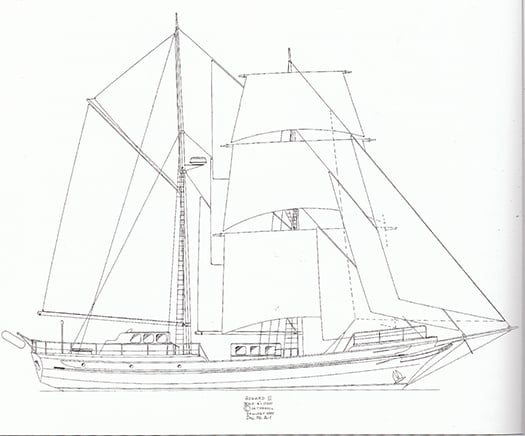
A timeless design which remains a very viable proposition for an easily managed ship which keeps her crew busy. Jack Tyrell's lines for Asgard II would lend themselves to construction in steel or even aluminium.
Ideally, to see Ireland's Tall Ship-owning reputation restored, many of us would like to see not just one newly-built replica of the 84ft brigantine Asgard II being launched, but three – one each for Cork, Dublin and Belfast. For, at the moment, the main axis of Atlantic Youth Trust activity seems to be between Dublin and Belfast. Yet as last weekend's National Annual Sailing Awards ceremony in Dublin so clearly underlined, Cork is really where it's at in terms of maritime development, and the lack of a significant Cork element seems to be a weakness of the AYT scheme.
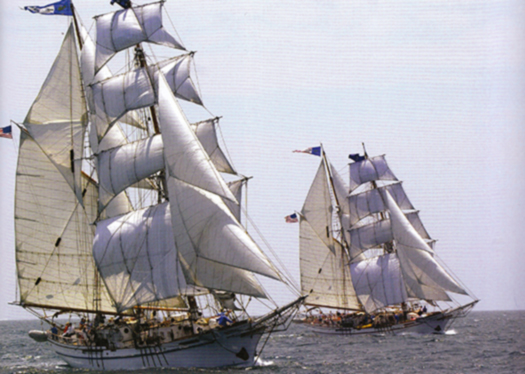
Might this be the way forward? One of our suggestions today is that Ireland really needs three Asgard IIs, based in Cork, Dublin and Belfast. We get an idea of how it might look with the two sister-ship American brigantines Exy Johnson and Irving Johnson, which are based in Los Angeles in California, where they were built in 2002.
Nevertheless, it says much for the dedication and energy of those promoting the Atlantic Youth Trust that we have the luxury of debating the validity of their plans, which have been so thoroughly developed. We may disagree with their conclusion, but it's not total disagreement – an Irish version of Spirit of New Zealand would be a very emphatic improvement on our present ship-less state, which is too much of a reflection of an ancient and negative mind-set.
Every time you see the Tall Ships gather and see how maritime countries of population comparable to Ireland, such as Norway, Denmark and Portugal, can send forth spectacularly handsome Tall Ships, it becomes a painful reminder of how the new Irish Free State increasingly turned its back on the sea.
The fact was admitted by Minister for the Marine Simon Coveney at last week's National Sailing Awards Ceremony in a speech which hinted at some very significant developments in the Irish maritime sphere in the near future.
But really, what Minister Coveney was talking about is that it is time and more for us to grow up in our attitude to the sea. When the Free State was struggling into being in 1922, the popular view was that British power was synonymous with sea power. So if you were against the sea and seafaring in all its manifestations, then you were demonstrating the purity of your patriotism through adopting what was essentially if subconsciously an anti-British stance. Childish perhaps. But we all know that's the way it was.
So despite the flurry of maritime enthusiasm which was engendered by national emergency during World War II to inspire the creation of Irish Shipping and the Maritime Inscription, what this meant was that when the underlying attitude genuinely began to change in the 1950s, a positive attitude towards the sea wasn't being built upwards from Ground Zero. It was being built from Ground Minus Thirty – the number of years that an anti-maritime attitude had been the unstated yet very real official policy.
Thus there was a period when Irish maritime enthusiasm had to be kept going almost as a secret cult, and I'd an odd reminder of this some weeks back at the annual Awards Ceremony of Sail Training Ireland. The Patron of STI is President Higgins, and the event was held – for the second year running – in the Mansion House in Dublin. Yet the very fact of the identity of their Patron, and of their event being staged in the Mansion House in the presence of Lord Mayor Christy Burke, provided such pleasure and pride for everyone in the gathering that it was a forceful reminder that, not so very long ago, seafaring was very much the poor relation in Ireland, and there were those in authority who would have happily air-brushed it out of the national picture entirely, leaving it to foreign crews to undertake the rough trades of the sea.
But thanks to those former members of Coiste an Asgard who refused to give up the vision of sail training for Ireland, even as the onset of economic Armageddon from 2008 to 2011 made any prospect of a new Asgard II a very distant vision as the government chucked the €3.8 million insurance payout into the bottomless pit of national debut, Sail Training Ireland arose like a Phoenix and set in place sail training bursaries for places on foreign tall ships, using international contacts built up during the 27 successful Asgard II years to ensure that Ireland could re-build our position at the heart of the movement.
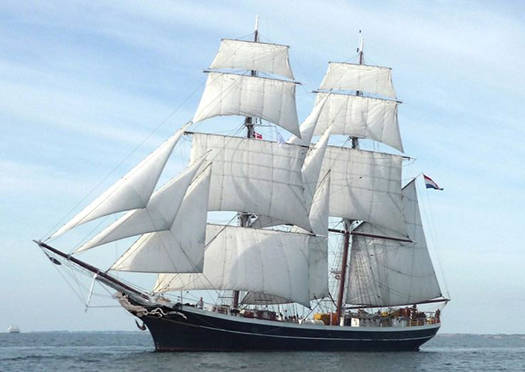
She keeps them busy....the Dutch brig Morgenster is superbly labour-intensive in the best sail training traditions. Photo courtesy STI
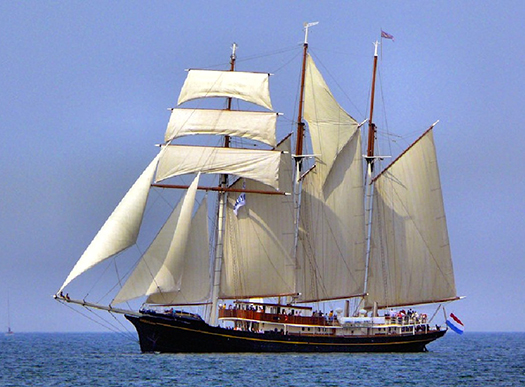
Gulden Leeuw is another of the Dutch Tall Ships which have been taking Irish trainees to sea on Sail Training International programmes. Photo: Courtesy STI
The thriving tall ships scene in the Netherlands – which has become a focal point for sail training and the Tall Ships industry for all Europe – proved the most fruitful placement area, with most Irish trainees being positioned aboard the very handsome 48 m (sparred length) brig Morgenster, which has become a familiar sight in Irish ports. Another ship well used is the three-masted topsail schooner Gulden Leeuw, a long slim craft as she is 70 m in sparred length, while that noted poster girl of Tall Ships sailing, the 56 metre three masted Dutch barque Europa, also carried Irish crew from time to time.
However, while placements on such vessels work very well, the hankering for an Irish sail training flagship is always there, and fortunately in recent years Oliver Hart's 70ft training schooner Spirit of Oysterhaven has been punching way above her weight in filling the role in gallant style with a varied programme on the Irish coast.
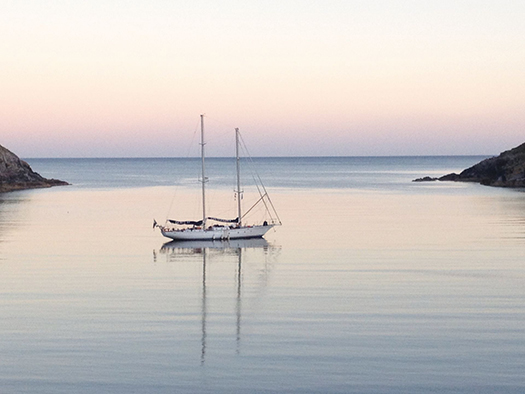
Spirit of Oysterhaven in South Harbour, Cape Clear Photo: Oliver Hart
This and much more was reflected in the Sail Training Ireland Awards Ceremony in the Mansion House, a goodly gathering which was representative not just of every possible aspect of sail training at home and abroad, but also of Irish ports which are increasingly interested in an activity which brings their ancient waterfronts vividly to life. And the progress of various ship projects was spoken for by everything from complete vessels such as the Basque Spanish schooner Atyla represented by Rodrigo de la Serna, through vessels in the making as personified by our own ketch Ilen. She has since seen her final new plank knocked ceremonially into place at Oldcourt in Baltimore, but here's an evocative video Gary MacMahon left with us of the creative planking process under way. And present too was Neil O'Hagan of Atlantic Youth Trust, whose organisation deservedly received recognition for their pioneering work towards a completely new ship.
{youtube}ZLT3D8TBbwk{/youtube}
The main awards presented in the Mansion House by STI Chairman Seamus McLoughlin, who is former Head of Operations for Dublin Port, were:
1. Trainee of the year: Andrew Crowley
2. Special Contribution Award: Turlough Kennedy
3. Special Achievement Award: Fiona Armson
4. Perpetual Asgard Award: For an outstanding contribution to, or achievement in Sail Training by an individual or group: Atlantic Youth Trust / Foroige Group of Trainees
5. Watch-leader of the Year: Sara Mason
6. Volunteer of the year: Jonathan O'Brien
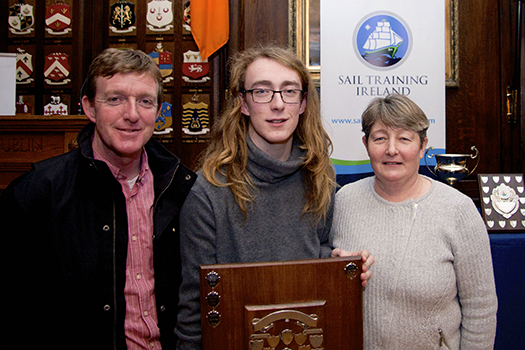
Trainee of the Year Andrew Crowley with his parents in the Mansion House
Trainee of the Year Award: Andrew Crowley
Andrew is Club Captain of the Spirit of Oysterhaven Trust. During 2014, he was instrumental in helping to organise the Club's sailing trips aboard Spirit of Oysterhaven with a special emphasis on providing opportunities for young people with disability. He helped to organise the Club's Youth in Action programme, and crewed aboard Spirit during the Irish Cruising Club's sponsored Anniversary voyage from Glandore to Glengariff with a crew of eight trainees, including several with disability. During the summer Andrew was a vital member of a short-handed crew delivering Spirit from Oysterhaven to Glandore during which he proved himself an outstanding active crew member.
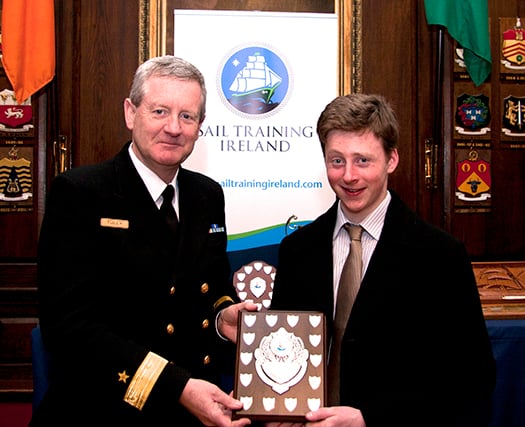
Commodore Hugh Tully, Flag Officer Commanding Naval Service, with Turlough Kennedy, who received the Special Contribution Award
Special Contribution Award: Turlough Kennedy
This year's special contribution award goes to Turlough Kennedy from the lakeside port of Scarriff in County Clare for the outstanding role he filled on the Dutch tall ship Morgenster.
To quote Michael Byrne, Director of Sail Training Ireland: "This contribution was not only recognised by us. On completion of last year's voyage Turlough - despite his limited sea going experience - was offered a crew member's berth on board the ship by the Captain. While he was not in a position last year to take up this offer for the remainder of the 2014 season, in 2015 we are delighted that Turlough will be sailing as voluntary crew on board the Morgenster. The following is a short note from the ship's Captain, Harry Muter: "Turlough sailed with us last year and he was very good good both in the sailing department as in the social processes. For his age he was surprisingly adult, patient and emphatic. And then the music, it coloured this voyage, and Turlough played a role with his complicated bagpipe and improvisation talent. Looking forward to sail with him again." " (There are no prizes for guessing that "complicated bagpipes" are Uileann Pipes).
Special Achievement Award: Fiona Armson
The special achievement award this year went to Fiona Armson for the tenacity and determination she showed by completing her 14 day voyage. Fiona found some aspects of life at sea a real challenge but despite being given several opportunities by her leaders and the crew to take on a lighter work load Fiona refused to leave her watch and pushed on.
Fiona completed her voyage having never missed a single watch or duty and, in a way that would put a smile on any sailor's face, she sailed the Gulden Leeuw into her home port of Bangor.
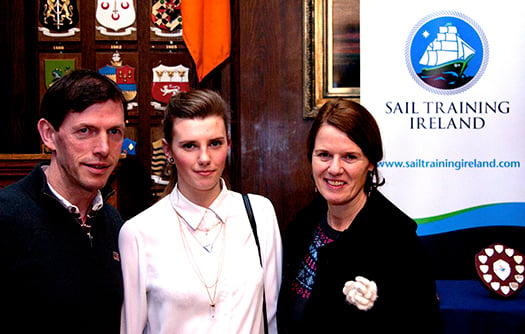
Special Achievement Award Winner Fiona Armson with her parents
Perpetual Asgard Award
Awarded to a group of four Foroige Trainees: Michael Collins, Dean Mc Keon, Brandon McDonagh, and Daniel O'Halloran,
In March 2014, four young people from Ballybane in Galway set out on a remarkable adventure, travelling half way around the world to experience the Spirit of Adventure's 10-Day Youth Development Voyage in New Zealand. Three youth workers accompanied the group for the three week trip, and one of them, Pearse O'Toole, was at the Mansion House with them. The trip was funded by a private donation and managed by the Atlantic Youth Trust and Foroige.
The group spent 10-days sailing around the magnificent Hauraki Gulf off Auckland on the barquentine Spirit of New Zealand. They adapted very well to their new surroundings as crew members and returned with fresh skills, more confidence than ever, and a new outlook on life and what is possible.
Neil O'Hagan, Executive Director of the Atlantic Youth Trust, followed this award with a presentation about the Peace and Reconciliation Fund-supported Sea-Connections scheme, and then the next award was remarkably appropriate, as it was for the Watch Leader of the Year and it went to Sara Mason for her very successful participation in an EU Youth Exchange Voyage on Gulden Leeuw.
Sara (pronounced saarah) is from the North Island of New Zealand, but now lives and studies in Dublin. She is part of the Shackleton Outdoor Adventure Management Diploma Course in Colaiste Dhulaigh in Coolock. She joined the team of youth leaders which facilitated the main voyage programme of Youth Exchange projects in May-June. As a leader on the Dutch Ship Gulden Leeuw, she cared for and facilitated a group of 40 young adults over a 14 day period. She was an outstanding support to them as a leader, and brought with her a set of skills that are unique to professionals who spend their lives working with people in the outdoor adventure industry. She also has a fantastic energy and enthusiasm and was an inspiration to the trainees and other leaders.
Volunteer of the Year Award - Jonathan O'Brien
Jonathan has become involved in a multitude of voluntary activities with Sail Training Ireland in the last year. In 2013 he volunteered as a youth leader for one of STI's youth exchange voyages for 10 days from Belfast to Dublin. In 2014 he was head-leader across youth exchange voyages with a total of 8 leaders, with at times up to 100 trainees across three ships seeking his support.
Having a background in both outdoor education and in social care, Jonathan has an exceptional set of skills that lend themselves very well to the role of leader on a tall ship, and he has now found himself "volunteered" for a position on STI's sub-committee for trainee programmes. During 2014, he also spent time on a number of ships across Europe, while somehow also fitting in a spell serving as First Mate on the Spirit of Oysterhaven. He is helping to develop on-board programmes for a number of STI's funded voyage schemes during 2015, and will also train STI's group of twelve youth leaders in April.
So the good work goes on, but the more of it there is, the more it become apparent that Ireland needs her own tall ship, and the sooner the better. A programme of international placement may work very well for those in the know, but for people down the country which are remote from maritime communities, it often takes the stimulus and sense of pride engendered by an Irish ship to make that first move afloat.
It was summed up so well by investigative academic and journalist Dr Elaine Byrne in our story about the Tall Ships on January 17th that it deserves repeating here. Usually in her line of work, Elaine Byrne takes no prisoners. But the quiet depth of feeling underlying the brief story of how the Byrne family from the deepest rural depths of County Carlow became involved in sail training has a resonance for us all today:
"I'm the oldest of seven children from a farming family on the Carlow/Wicklow border, where the household income is augmented with a funeral undertaking business attached to a pub in which I might still work on visits home. Our background is just about as far as it's possible to be from Ireland's maritime community. Yet thanks to Asgard II, I was able to take a step into the unknown world of the high seas as a trainee on board, and liked it so much that over the years I spent two months in all on board, graduating through the Watch Leader scheme and sailing in the Tall Ships programmes of races and cruises-in-company.
Down in the depths of the country, my new experiences changed the family's perceptions of seafaring. Four of my siblings then had the opportunity to sail on Asgard II. If it were not for Asgard II, my family would never have had the chance to sail, as we did not live near the sea, nor had the financial resources to do so. The Asgard II played a large role in our family life as it became a Rite of Passage to sail on board her. My two youngest siblings did not sail on Asgard II because she sank, which they much regret.
Apart from the discipline of sailing and the adventure of new experiences and countries, the Asgard II brought people of different social class and background together. There are few experiences which can achieve so much during the formative years of young adulthood".
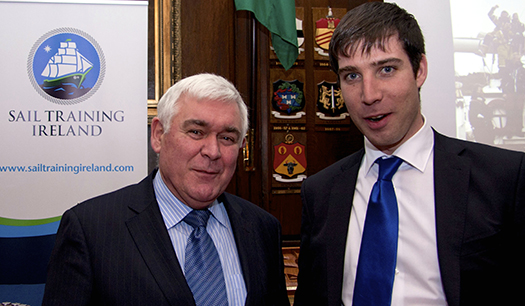
Seamus McLoughlin, Chairman of Sail Training Ireland, with Michael Byrne, Director.

Carolanna Foley, awarded a Drogheda Port Sail Training Bursary, with Seamus McLoughlin (left) and Commodore Hugh Tully
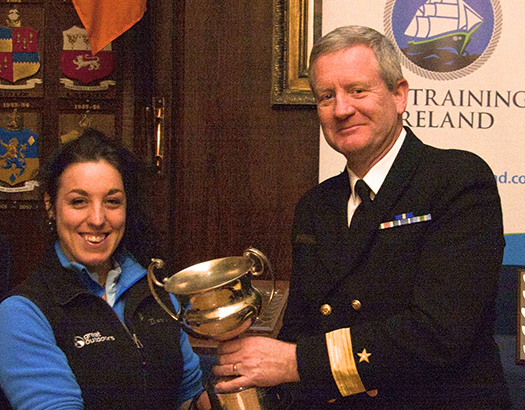
Sara Mason, Watch Leader of the Year, with Commodore Hugh Tully

Jonathan O'Brien (left) Volunteer of the Year, with Oliver Hart
- Sagres
- Tall ship
- Coiste an Asgard
- Atlantic Youth Trust
- barquentine
- Sail Training Ireland
- Sail Training International
- John Killeen
- Enda O'Coineen
- Neil O'Hagan
- Dykstra
- Damen Shipyard
- sailing
- Simon Coveney
- Lord Mayor
- Phoenix
- Spirit of Oysterhaven
- Europa
- Morgenster
- Gulden Leeuw
- Basque Spanish schooner Atyla
- Ilen
- Elaine Byrne
- Oysterhaven
- Mansion House
- Christy Burke
- World War II
Sailing's Secret Side Revealed in Irish Cruising Club Awards
#irishcruisingawards – As the recent Irish Sailing Association's Public Consultation meetings in Dun Laoghaire, Cork and Galway to discuss its new Strategic Plan 2015-2020 have shown, the cruising community may not be high profile, but there are many of them, and their behavioural patterns in going afloat, and ways and means of doing it, are as varied as their extraordinary range of boats.
What is clearly emerging is that the cruising people expect Irish sailing's national authority to be able to guide them towards qualifying for the International Certificate of Competence, it also expects them to be able to negotiate the government into a more sensible and manageable system of boat registration, and it expects the ISA to be up to speed on the problems being faced about the lack of convenient fuel pumps for marine diesel, and the continuing confusion in the situation regarding which type of fuel is legally available for use on boats.
But while those who cruise expect the ISA to provide a user-friendly administrative environment in which they can go about their various projects and pleasures afloat provided that they comply with statutory safety regulations, they do not seem to wish the ISA to be organisationally involved with what they actually do afloat. W M Nixon takes up the story.
Racing, with its global structure of competition, its many internationally-recognised rules and regulations, and its basic requirements of competence by event management teams, is an obvious area of interest for the Irish Sailing Association through supportive action and, where required, direct involvement.
But cruising......well, for the racing obsessives who garner the bulk of sailing's attention and publicity despite probably being the minority of those who go afloat, cruising is usually seen simply as "not racing". It is essentially a private venture usually involving just one boat and her crew. And even where experienced crews have committed themselves to taking part in a more formalized Cruise-in-Company run by some group or club, they expect significant segments of down-time where each boat or small groups of buddy boats can go off and do their own sweet thing in terms of itinerary and length of passage chosen.
But for most cruising crews, the ideal cruise is carefully planned for just one boat, taking into account the time available and the capabilities of boat and crew, and making due allowance for the conditions prevailing in the cruising ground selected, while always realizing that the final word on what is or is not achieved will be ultimately dictated by the weather.
On such cruises, while some arrangements may be made ahead, with crew changing at pre-ordained ports often a dominant factor, the underlying hope is that there will be a sense of freedom of movement as to specific ports and anchorages being visited. And far from expecting to cruise in a formalized group, the traditional cruising enthusiast will reckon that new friends met informally ashore or on other boats in newly-visited anchorages and harbours is all an essential part of the colourful mix of unplanned yet enjoyable experiences which makes up a good cruise for just one boat voyaging on her own.
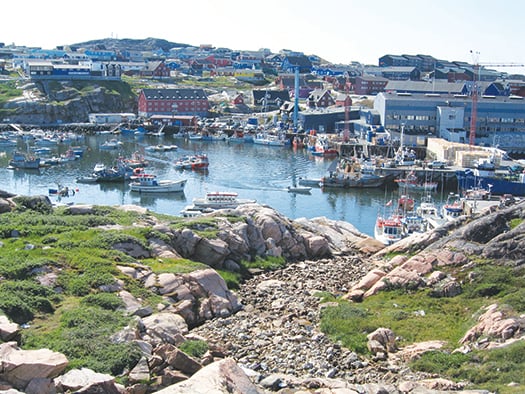
Objective achieved. Eddie Nicholson's Najad 440 Mollihawk's Shadow from Kinsale in the midst of things in the far northern harbour of Illulissat in West Greenland. This was the cruise which has been awarded the ICC's Strangford Cup. Photo: Pat Dorgan
Then too, every so often the boat and her crew will have to deal with adverse weather conditions. Doing so successfully and competently is part of a truly satisfying cruise. And so is reaching some objective, whether it be a distant port or island, or some place which provides access to a desirable mountain top to meet the needs of those climbers who are drawn to the possibilities offered by a cruising boat's wide range of destination options.
And then there are the cherished memories which only cruising can provide, while equally there are shoreside experiences which seem heightened when you've come off a boat to witness them. For instance, the famous swing of the mighty incense-filled Botafumeiro in the ancient cathedral at Santiago de Compostela in Galicia in northwest Spain is something wonderful to behold at any time, but when you happen upon it by lucky chance the day after you've sailed your boat out to Spain from Ireland, it becomes almost supernatural.
As for experiences which are exclusive to cruising folk, you can only really sail in to Venice with the dawn on a cruising boat, the only way to see Bonifacio as Ulysses saw it is when cruising, only with a cruising boat can you coast along under the absurdly vertical and ridiculously high Fuglabjorgs – the bird cliffs – of the Faeroes, only when you've got there with a cruising boat can you really savour the unique sense of place at Village Bay in St Kilda, and only by arriving in a lone cruising boat can you grasp just what a very special place is to be found at Inishbofin.
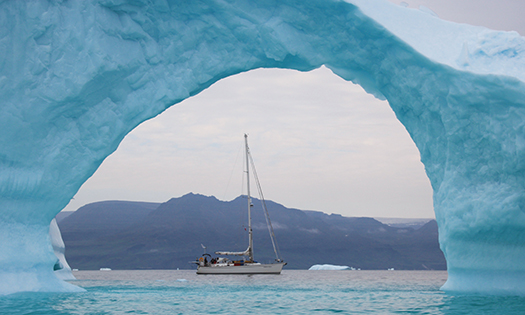
So who needs a picture frame? Mollihawk's Shadow in a classic Greenland setting. Photo Pat Dorgan
While the unique pleasures of cruising are available to anyone with the basic experience and ability combined with access to an appropriate boat whether owned or chartered, in the final analysis these are private pleasure, intensely personal in their meaning. And thus they're just about unmeasurable by any known system. So how on earth can any national authority which is inevitably training and racing oriented get a handle on what is going on in the world of Irish cruising?
Well, you could try just counting the number of boats with a lid in each port which don't go racing, and simply conclude that they should be added to statistics as part of the Irish cruising fleet. You could go into more detail by research through questionnaires to marina berth or mooring holders. And you could extrapolate answers which might give some sort of statistical picture. But as the recent Sports Council report on the numbers supposedly taking part in all areas of watersports involving floating vehicles of some sort or other and based on figures supplied by each special interest organization might suggest, you could well end up with some rather fanciful totals.
Thus last night's Annual General Meeting in Dun Laoghaire of the Irish Cruising Club was more than just a get-together of the organisation which has been at the heart of Irish cruising from its formation in 1929. For the ICC AGM is when Irish cruising is most closely analyzing itself. Since its formation, the club has become firmly established in its central role through publishing its unrivalled sailing directions for the entire coast of Ireland in two regularly up-dated volumes based on unrivalled local knowledge.
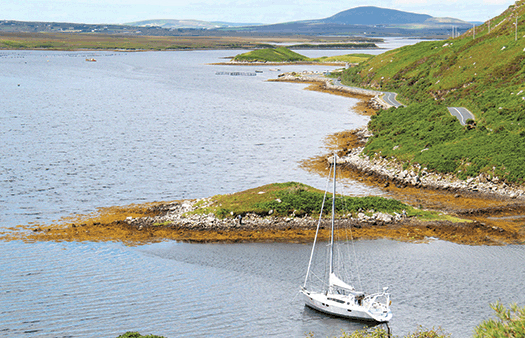
Man at work. ICC Sailing Directions Hon. Editor Norman Kean has placed Niall Quinn's new Ovni 395 Aircin in a decidedly neat little spot in Bellacragher Bay on the mainland side of Achill Sound during a research of the neighbourhood. For his tireless efforts on behalf of pilotage research, Norman Kean has been awarded the Rockabil Trophy for 2014. Photo: Norman Kean
But while the Sailing Directions are the public face of the ICC, there's a more private face which last night also went public with the presentation of the club's annual cruising awards. While cruising is indeed an ephemeral activity which can be difficult to measure and analyse in any meaningful way, cruising awards are specific trophies for the best cruise in some particular category.
While they were viewed with suspicion in the early days of cruising, the fact is that the keeping of a seamanlike log has always been a central part of proper seafaring, and these days its translation into a manageable narrative, eligible for a cruising award, is regarded as an integral part of the sport (and here we use "sport" in that special Irish sense to describe an activity which is not necessarily directly competitive, but has a certain edge of fun to it, for in active cruising you're in competition with yourself).
And of course a proper log also provides – or should provide - useful information for those who may be planning to visit the same cruising ground. But it's in the bigger picture that a well-prepared log is at its most useful, as it assists those trying to grasp just what Irish cruising is all about, and how it is developing.
The superb collection of logs compiled by Honorary Editor Ed Wheeler in the Irish Cruising Club Annual 2014 is a fact-filled picture of Irish cruising as it is today, so perhaps it should be required reading for those members of the Board of the ISA who don't really get what cruising is all about.
That said, there are those who would point out that if you don't "get" proper cruising after experiencing just a little bit of it, then you'll never get it, and there's little point in trying to grasp its multiple meanings. If that's the case, then please just accept that it is there, it's an important part of the Irish sailing scene, and those of us who cherish it simply wish to be left in peace to get on with it with a minimum of bureaucratic interference.
But enough already of trying to set the scene. With 33 full logs of cruises in many areas with widely varying mileages, and in boats of all sizes from the 70ft schooner Spirit of Oysterhaven (Oliver Hart) down to the 24ft gaff cutter North Star cruised by Mick Delap of Valentia Island, the Irish Cruising Club Annual 2014 further augments its plethora of information and entertainment with eleven additional mini-logs, and Honorary Editor Ed Wheeler is to be congratulated on putting together such an eclectic collection in a way that makes sense and gives us an unrivalled overview of contemporary Irish cruising.
Also worthy of congratulation and indeed commiseration is Log Adjudicator Arthur Baker of Cork, for with such an abundance of voyages, the fact that the Club's eleven challenge awards are generally very specific in their categories meant that he had a formidable array of cruises to choose from for the two premier Trophies, the Faulkner Cup for the best cruise of the year which dates back to 1931, and the Strangford Cup which was inaugurated in 1970 for "an alternative best cruise", as by 1970 too many very meritorious cruises were not getting the recognition they deserved.cru5.jpg
Cruising partners. Neil Hegarty and Ann Kenny in the Caribbean during Shelduck's award-winning cruise. When they're not cruising his Dufour 34, they're cruising her Chance 37 Tam O'Shanter which is currently in the Baltic.
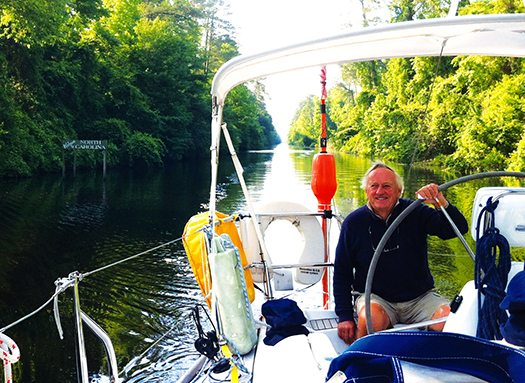
When you're told it's called the Dismal Swamp Canal, you've just got to go and see it. Neil Hegarty on Shelduck's wheel as she departs North Carolina via the Dismal Swamp Canal. Photo: Ann Kenny
FAULKNER CUP for best cruise in 2014.
Neil Hegarty (Crosshaven) with Shelduck, a 2003 Dufour 34. Shelduck's eight month cruise started with an east-west Transatlantic crossing, and then continued through the Caribbean including Cuba and on in detail up the East Coast of America until, after transitting the cheerfully-named Dismal Swamp Canal, they laid up for the hurricane season in the Atlantic Yacht Basin just north of Cape Hatteras. While other crews were aboard occasionally, throughout the voyage Neil Hegarty (a retired architect who was formerly in the forefront of racing fleets) was crewed by Ann Kenny of Tralee, whose own boat, the Chance 37 Tam O'Shanter, is currently in the Baltic. So to balance the Atlantic experience, they then went on for three weeks of Baltic cruising in the perfect sailing weather which that great inland sea enjoyed for much of 2014.
STRANGFORD CUP for alternative best cruise.
Eddie Nicholson, who sails from Kinsale, has been cruising the American side of the Atlantic in considerable detail since 2008 with his 2007 Najad 440 Mollihawk's Shadow. The boat's name derives from the 70ft 1903-built schooner Mollihawk with which a relative, Commander Vernon Nicholson of Cork and his family, sailed across the Atlantic in 1948. Their intention had been to get to Australia, but in cruising the Caribbean en route they sailed in to the abandoned and deserted former Royal Navy port of English Harbour on Antigua. They'd barely settled in the anchorage when some guests from a nearby hotel found their way on board and asked to be taken for a sail. Thus was Nicholson Yacht Charters brought into being. Any Australian plan was soon abandoned, and Antigua as we know it today, the focus of Caribbean sailing and home to the RORC Caribbean 600, was showing its first signs of its new existence in the winter of 1947-48 thanks to the arrival of Mollihawk.

A long way indeed from the balmy breezes of Antigua where the schooner Mollyhawk made her new home in 1948. These are classic Greenland conditions as seen from Mollyhawk's Shadow during 2014, Photo: Pat Dorgan
Her near namesake has been spending recent summers in waters remote from the balmy delights of the Caribbean, as she has been up and around eastern Canada. In 2014 Eddie and his number one shipmate Pat Dorgan combined forces to bring the much-travelled boat home via Greenland where, on the West Coast, they got as far north as Illulisat which looks to be a perfectly charming spot, but it still contrived in mid-summer to have its entrance blocked by ice from time to time. In fact, this was a cruise to West Greenland which started in Newfoundland and concluded in Kinsale, and when you work out what all that means, then you're beginning to grasp the sheer diversity of contemporary Irish Cruising Club activity.
THE ATLANTIC TROPHY is for the best cruise with an ocean passage of at least a thousand miles, and it goes to John Coyne of Galway for a nicely-balanced cruise with Lir, his 1990 van de Stadt 10.4m steel sloop. Lir's voyage took her from Galway Bay south to northwest Spain, then across to the Azores, then home to Ireland to sail 1,219 miles from Ponta Delgada to Inishbofin, which is Atlantic cruising at its very best.
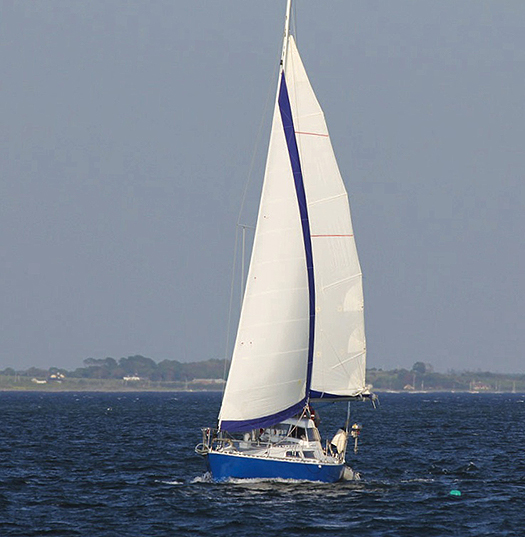
John Coyne's Lir sailing on her home waters of Galway Bay. In 2014 she sailed first to Northwest Spain, then to the Azores and thence to Inishbofin.
THE ROCKABILL TROPHY is for exceptional seamanship or navigation, and adjudicator Arthur Baker very cleverly turned it into a sort of Lifetime Achievement Award for Norman Kean of Courtmacsherry, who is of course the ever-diligent Honorary Editor of the Irish Cruising Club Sailing Directions, and in 2014 he was to be found on board various members' boats in some distinctly obscure locations, pushing the envelope for tiny anchorages.
THE FINGAL TROPHY goes to any log with a certain quirkiness which appeals to the judge, and for 2014 it is for Ian Stevenson and Frances McArthur's account of the early-season cruise of the 1994 Beneteau First 42s7 Raptor from Strangford Lough to northwest Spain for much port-hopping, then back across Biscay to cruise South Brittany in considerable detail, then home to Strangford – 2124 miles in all.
THE WILD GOOSE CUP, presented by the late Wallace Clark whose writings on cruising were universally admired, is for a log of literary merit. Theoretically it could be won by a cruise of just a hundred miles, but for 2014 it is the stylishly recounted story of the 2800 miles sailed by the Tony Castro-designed CS 40 Hecuba from her home port of Cascais in Portugal down to the Canaries, thence to the Azores, then back to Portugal, which most deservedly sees John Duggan awarded the trophy.
THE MARIE TROPHY - best cruise by a boat less than 30ft.
The little 1894-built cutter Marie was the first boat to be awarded the Faulkner Cup in 1931, and this trophy celebrating her memory is a reminder that the ICC is for boats of all sizes. With his part-owned Moody 27 Mystic, Peter Fernie of Galway fits well within the upper size limit for this award, yet with a crew of very senior sailors he'd himself a fine old time cruising from GBSC at Rinville to Kinsale and back, visiting all the best ports and anchorages in between.
THE GLENGARRIFF TROPHY is for the best cruise in Irish waters. Curiously enough, while there may have been boats which got round Ireland as part of other ventures, there was no specifically round Ireland cruise to be eligible for the ICC's Round Ireland Cup, which dates back to 1954. But the newer Glengarriff Trophy has a wider brief, and it goes to Brendan O'Callaghan of Kinsale for a cruise from Dun Laoghaire northabout to Rossaveal in Galway Bay in the Westerly Fumar 32 Katlin, with many of those unplanned yet hugely entertaining meetings along the way with other cruising boats, which is what true cruising is all about.
THE PERRY GREER BOWL is for the best first log by a new member. They seldom get as good as this, as Justin McDonagh of Killarney's debut account of his family cruise with the 2010 alloy-built van de Stadt 12m sloop Selkie takes us from the Canaries to the Caribbean, thence to Maine via Bermuda, and finally to New York, a wonderful achievement by any standards.
THE FORTNIGHT CUP is for the best cruise within 16 days.
In 2010, 2011 and 2012, Fergus and Kay Quinlan of Kinvara with their own-built van de Stadt steel cutter Pylades were awarded the Faulkner Cup three years on the trot as their fascinating voyage around the world rolled on. But in 2014 they showed they could cut the mustard when time was limited. Pylades headed north from Galway Bay and by the time they returned they'd been to islands as various as Tory, Barra, Eriskay, Canna, Mull, Colonsay, and Inishturk.
THE WYBRANTS CUP is for the best cruise in Scottsh waters, which may seem an odd trophy for an Irish club, but the ICC has a significant membership in the north, and the west of Scotland is their Southwest Ireland. For 2014 the Wybrants Cup goes to Matthew Wright who cruised the Sweden 38 Thor from Bangor far north along the Scottish mainland's west coast, but also found time for a detailed visit to Skye including the remarkable Loch Scavaig.
The Irish Cruising Club has several other trophies for specific achievements, and one of the most poignant moments of 2014 came in December when the ICC's JOHN B KEARNEY CUP for services to sailing was posthumously awarded to the much-mourned Joe English.
Last night, another trophy for special service and achievement went to Kieran Jameson of Howth, who received the DONEGAN MEMORIAL TROPHY for years of devotion to offshore sailing in a career which includes 15 consecutive Fastnet Races, nine consecutive Round Ireland Races, one Middle Sea Race, one Round Britain and Ireland Race, and one ARC.
Northern ICC member and environmental activist Brian Black was also honoured with the WRIGHT SALVER for his remarkable series of voyages far north along the challenging East Coast of Greenland - he got to72N in 2014.
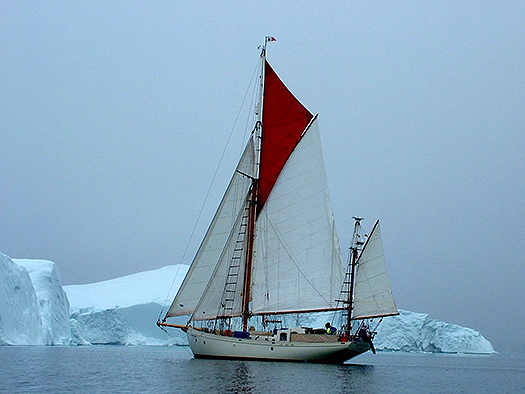
A steel-built gaff yawl? The 44ft Young Larry is unique in many ways, and now her owners Andrew and Maire Wilkes have been awarded the very special Fastnet Trophy
Another special award which has found a new home is the ICC's FASTNET TROPHY, which is not necessarily presented every year, and is for exceptional international achievement in any maritime sphere. The latest recipients are Andrew Wilkes of Lymington in England and Maire Breathnath of Dungarvan. They've been Mr & Mrs Wilkes for some time now, but their achievements are such that they deserve to be recognised as two remarkable individuals whose extensive cruising in the 44ft steel-built gaff yawl Young Larry is simply astonishing, as it has included a complete circuit of North America which took them through the Northwest Passage some years ago when it was still a prodigious challenge. During 2014 they took the opportunity to cruise in detail to many of the places between west Greenland and eastern Canada which they'd had to hasten past before, and awarding the Fastnet Trophy to them is proper recognition of a level of dedication to cruising which few of us can even begin to imagine.
Of course, not all ICC activity is to utterly rugged places, and one of 2014's more intriguing ventures was by Paddy Barry (no stranger to distant icy places himself) with his alloy-built former racer, the Frers 45 Ar Seachrain. He provided the mother-ship for a waterborne camino to Santiago de Compostella being made by the Kerry naomhog Niamh Gobnait, led by the legendary Danny Sheehy. This traditional 24ft craft has already been rowed round Ireland and up to Iona, and by the end of 2014's stage of the voyage to northest Spain, they'd got to Douarnenez in Brittany with the Biscay crossing in prospect for this summer.

Although the 24ft Kerry naomhog has been rowed round Ireland and up to Iona, the current voyage to Santiago is in another league. This year Danny Sheehy and his team plan to get to the other side of the Bay of Biscay from their current winter storage in Douarnenez. Photo: Patricia Moriarty
Altogether less serious but a date well worth celebrating was the 85th Anniversary of the foundation of the Irish Cruising Club at Glengarriff on the 13th July 1929. So Paddy McGlade of Cork organised an easygoing cruise in company for 35 boats in which the only totally rigid date was being in Glengarriff for July 13th, which was duly achieved. And prominent in the fleet was ICC member Oliver Hart's 70ft schooner Spirit of Oysterhaven. This is a boat which has to work for her living as a sail training vessel. But the ICC were able to take this comfortably in their stride, as the continuing steady sale of the voluntarily-produced Sailing Directions leaves the club with a modest financial surplus. In 2014, some of this was re-directed to provide eight bursaries so that young people could avail of Sail Training opportunities on Spirit of Oysterhaven during the Cruise-in-Company, an imaginative use of funds which worked very well indeed.
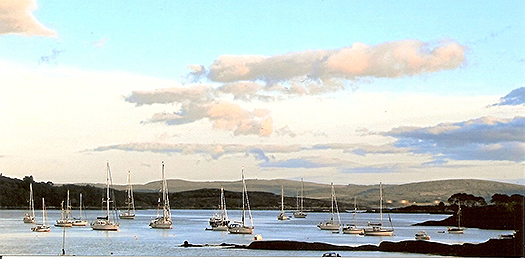
Part of the ICC fleet in Glengarriff for the 85th Anniversary. The smallest boat, Mick Delap's 24ft North Star, is on the right. Photo: Barbara Love
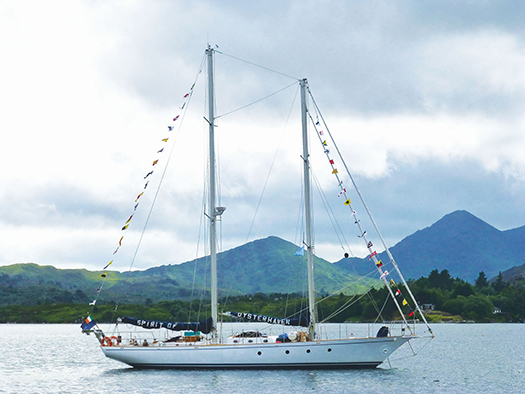
The biggest boat in the fleet – Oliver Hart's 70ft schooner Spirit of Oysterhaven was carrying a crew of trainees as part of the Cruise-in-Company
Is Being an Olympic Sport Good for Irish Sailing?
#olympicsailing – Water Rat's article: Is ISAF Alive To Sailing's Survival As An Olympic Sport? has raised the issue about the future viability of the Olympic sailing movement and brought reaction from readers, including Midshipman, who says it begs two interesting questions:
· Is being an Olympic sport good for sailing?
· Why have the amazing advances we have witnessed in technology over the last 15 years not made sailing more accessible and less expensive?
With the exception of the Laser (a manufacturer controlled boat which is not cheap at €7,250), none of the boats used in the Olympics are to be found in mainstream sailing.
The explosion in sailing during the 60's and 70's was fuelled by the development of exciting low cost boats built, mainly by amateurs, in plywood using new adhesive and coating techniques.
The turn of the century has seen vast improvements in the technologies used in boat building, making boats lighter, faster, stronger safer, but certainly not cheaper, as amateur construction can no longer compete with the sophisticated techniques of the boating industry.
That is probably why the most popular dinghy class in the world remains the inexpensive and simple Sunfish while low tech Hobie Beach Cats still dominate the multihull scene.
In years gone by, most young sailors got their start in wooden Optimists, often built by enthusiastic parents at modest cost over a couple of weekends and then typically graduated to a home built Mirror or its equivalent for their first experience of multi crewed sailing with multiple sails.
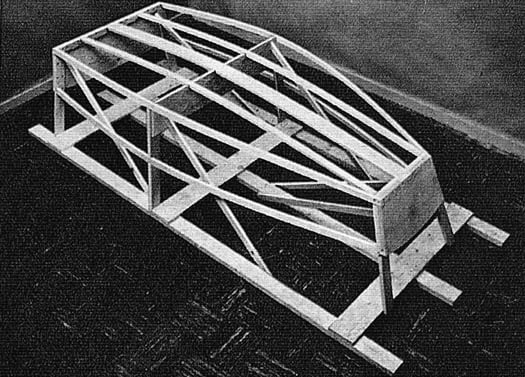
A wooden framework of the early Optimist dinghy
Nothing less than a relatively expensive Glass Fibre Optimist will do now and the Street Cred of young people is dependent on graduating to costly Lasers and 420s. In Ireland this situation is also compounded by the sense of failure youngsters experience if they fail to qualify for one of the Academy or Elite development squads which currently involves over 100 youth sailors of varied abilities.
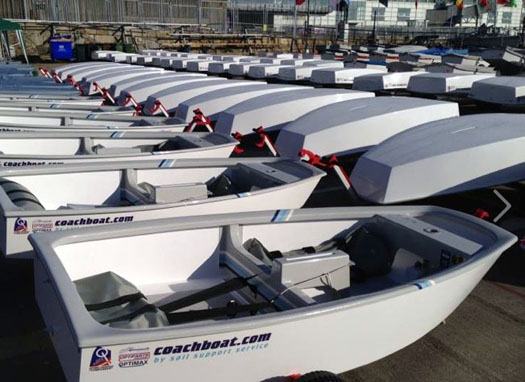
The scene today – charter boats used at Dun Laoghaire for the 2014 Optimist Europeans
Sailing has become so fixated on exciting performance and elite achievement that it has lost sight of the sheer enjoyment of messing about in boats at modest cost which is the principle attraction to the vast majority of people.
We all admire the highly skilled and motivated sailors who aspire to the ultimate Olympic challenge, but let's face it , what they do has virtually no relevance to the activities of most recreational sailors. ISAF uses racing formats and boats which are not reflective of the sport in general, largely on the grounds of needing to excite TV viewers.
With the exception of horse riding, sailing is probably the most equipment dependent (meaning most expensive) sport in the Olympics. I am not sure that this is a message which ultimately helps encourage people to become involved in sailing.
If we want to use the Olympics as a marketing opportunity for sailing, we should use inexpensive boats which are used on a widespread basis by regular sailors and only have 2 events each for men and women whilst eliminating the cost of shipping boats by supplying evenly matched equipment.
Olympic sailing has created a very costly industry which contributes little back to mainstream sailing. The costs are truly horrendous as demonstrated by the recent announcement that the ISA is appointing an additional CEO to head up a funding programme to raise a further €2.75m a year over and above the €1m plus it receives from the Irish Sports Council for Irish Elite sailing activities.
Does the Irish sailing community believe an annual level of expenditure of €3.75m on elite sailing provides the best economic payback to the sport in Ireland? If we could replicate what has been done in New Zealand, maybe there is a business case which can be justified.
However, €15m seems an outrageous amount of money to propose spending over an Olympic cycle, which is equal to something in excess of €800 on behalf of each member of the ISA.
Let's make sailing accessible, less expensive and more engaging and use the Olympics as a shop window to remove the elitist and esoteric imagery created by the current profile of existing Olympic classes.
What we are doing at the moment is deluding ourselves into believing that presenting our sport like NASCAR or Formula 1 motor racing will attract new people to buy Ford Mondeos and Fiat Pandas. – Midshipman
Is ISAF Alive To Sailing's Survival As An Olympic Sport?
#sailingolympics – The International Paralympic Committee (IPC) decision to drop sailing from the 2020 Paralympics is a wake-up call for the International Sailing Federation (ISAF). While the commentary talks about failures on the part of IFDS, the real issue seems to be sailing's lack of penetration into national sports programmes. Sir Philip Craven, President of the International Paralympic Committee, said sailing did "not fulfil the IPC handbook's minimum criteria for worldwide reach."
Last October, Water Rat commented as follows about the modern sailing world: ISAF is still very much a white, first world, wealthy organisation, with little outreach to the developing world. The same is true of the International Federation for Disabled Sailing. And all the participating countries can complain all they like, but until more disabled sailing programmes are established in the developing world their pleas will fall on deaf ears. It is tough to establish such programmes when equipment and access are such an important part of getting afloat, but such is the reality.
Is there a parallel with mainstream sailing. Well, it's not just about numbers, because ISAF has those with 140+ affiliated Member National Authorities, but many of those don't turn up at events, The Youth Worlds, for example, gets about 60 MNAs participating, well less than half the total affiliated number. Squash, one of the candidate sports for 2020 has a similar amount and although another of the candidate sports, softball has less, they have much greater activity in the developing nations in Africa and central America and Caribbean. Wushu, a martial art candidate sport, claims 147 affiliated nations.
And while it is not believed that sailing is under serious threat for 2024, it is not currently because of its lack of universality, rather that it is lower down the list than say, equestrian, synchronised swimming or pentathlon. Indeed pressure may come off sailing as some sports are facing dropping disciplines in an attempt to make the games more relevant, Athletics could well lose walking and triple jump for example, while rhythmic gymnastics could also go.
However, neither the paralympic or the mainstream sailing community will be impressed by ISAF's latest statement regarding their review of the IPC decision, which, albeit perhaps unintentionally, suggests that ISAF has accepted the IPC's 2020 decision and intends to concentrate on 2024 re-instatement. It is to be hoped that ISAF are now alive to the pressures on sailing's survival as an Olympic Sport.
Robot Sailing Team Preps For Canada-to-Dingle Transatlantic Challenge
#Robots - Engineering students in Vancouver are hard at work prepping their challenger for the title of first boat to cross the Atlantic completely unmanned.
As reported on Afloat.ie last October, the robotic sailboat team at the University of British Columbia put out a call for assistance from any marina along Ireland's Wild Atlantic Way willing to be their destination port for their attempt at the Microtransat Challenge.
And now they have a finalised route that will take them from St John's in Newfoundland to Dingle in Co Kerry – a journey of three weeks and 2,900 kilometres.
But as the Comox Valley Record reports, they've only got till August to get their 5.5m sailbot ship-shape.
That involves installing a hodge-podge of robo-tech driven by solar panels and a network of sensors and GPS receivers to keep the as-yet-unnamed vessel both on course and away from any obstacles that might arise - whether bad weather systems, fishing boats, shipping lanes or random debris.
"It's not some kind of lab where everything's tip-top shape," says Kristoffer Vik Hansen, co-captain of the UBC sailboat team, of the improvised nature of their pioneering project. "You're working with real nature; you're sailing on the ocean."
The Comox Valley Record has more on the story HERE.
Irish Sailing's New Strategic Plan Charts 2020 Course
#isa – Two years after a heave against the Irish Sailing Association (ISA) a new five year strategic plan has been published writes David O'Brien in this morning's Irish Times sailing column HERE.
The Plan is for the period 2015 - 2020 and is based on the views that were put to a 'Strategic Review Group'. The SRG was asked by the Board in 2013 to assess where the Association stood and how it needed to adjust to better serve the sport of Sailing. The Board accepted its Report and tasked a group to prepare a new Strategic Plan for the ISA based on its contents.
This blueprint (downoad the draft plan below as a 2mb pdf file) looks like a positive step forward not least because it makes an attempt to implement measurable targets for the good of grass–roots sailors. That rule was something lacking on a now scrapped 2020 vision document sub–titled 'grow the sport, grow the membership, grow the organisation'. This discredited plan turned out to be boom time folly and like so many other projects around the country at that time, poorly thought out and only half–built.
On foot of it, in 2013 a band of dissenting sailors held the ISA to account for its lack of performance. Back then, association efforts were more focussed on getting the ISA genie back in the bottle than the sport back on track. In a push for change at the National Yacht Club (NYC) in April 2013, the embattled body heard over 300 suggestions for change.
Not least was the fact sailing had lost a quarter of its members in recession and key yacht clubs are still in choppy financial waters. A massive fall off of junior sailors also presented an inconvenient truth that problems lay not with the children but with the paucity of guidance for newcomers.
Sailors like Norman Lee and Bryan Armstrong were joined by former president Roger Bannon (now its Treasurer) in calling for fundamental reform.
'The ISA has lost its way over the last few years," Bannon wrote in March 2013, giving his view of a bureaucracy 'detached from the reality of what is going on in the front line'.
Around the same time, County Wicklow dinghy sailor Lee said he wanted 'the ISA focus off elite sailing and the emphasis instead to be on enjoying sailing for fun as per the association's own articles of association'.
Two years on, an independent group of sailors has charted a new course but does this revised game plan satisfy these demands? Will it be a boost for clubs and classes, particularly smaller ones, or is the only comfort for them the fact that the process took place?
The underlying principle of the Plan is moving from a 'governance approach' to one of the principal stakeholders in the Sport working together with goal of encouraging and developing participation. The Association, Clubs, Training Centres, Classes and associated groups working in union to achieve those objectives underlies all of the strategies. There will be a renewed emphasis on utilising the input of volunteers to harness the skills and knowledge of active sailors so that the ISA can evolve and develop and respond to issues that arise.
The approach is in a logically presented format but there is very little that suggests the ISA will support ageing, less popular class associations, preferring rather to put faith in the bricks and mortar of clubs and training centres to strengthen access and participation avenues for current and potential sailors.
While many of the strategies are laudable, there will be difficulties in operating them, particularly where they are dependent on the vigour, enthusiasm and skills of volunteers at club level.
Indeed, there may be some instances where ISA aspirations are in direct conflict with local trends and activities. For example, what will the Optimist and Laser classes say to the strategy of 'encouraging participation of younger sailors in two person boats' or the dinghy classes about the strategy of encouraging crewing in keelboats.
The scenario will create debate about the professional structure required to deliver on its aspirations particularly in the training area. Suitably qualified personnel are necessary to negotiate the tricky waters disturbed by the demands of the multiple agencies with a stake in the sport and its delivery – HSA, Department of Transport, Department of Education.
At the same time it would appear that the working plan appears to validate the ISA's High Performance department as many of the strategies suggested are actually currently operational.
There are a number of curious omissions:
·No mention of Paralympic sailing in the High Performance section
·No mention of Youth Worlds, a fertile ground for ISA recently
·No mention of financing the association, strangely in light of the discussion around its joint membership scheme.
Where does the balance lies when gauging the benefit of an organisation producing a strategic plan – is it the outcome or the process that is the more valuable exercise? Or worse still, is it the creation of a stick to be beaten with further down the road if targets are not achieved.
The ISA has been fortunate in being able to rely on some excellent volunteer directors for the overhaul process. The combination of effectiveness and commitment of the new board has brought the association a long way in a short time but how sustainable is this voluntary effort over time?
One doer maybe better than forty talkers but effective volunteers are hard to find. Finding an ISA President a year ago was not without difficulty in itself. In the absence of such voluntary effort, and with the benefit of experience, can the professional staff see this new plan through or is more help needed?
As a draft, this document will no doubt undergo some change in the process that now follows. And while there have been some changes at the ISA's Park Road HQ, the evolution of the ISA from the Ursula Maguire administered one-person organisation of 20 years ago continues with a relatively minor correction of the set and drift that had crept in in recent years. Are more changes still to come? Will there be a replacement for the recently departed training director? Perhaps too someone is also needed to support the club racing side – maybe in conjunction with the Irish Cruiser Racing Association (ICRA)?
The appointment of Regional Development Officers to assist Clubs and Training Centres has been seen as one of the ISA success stories in recent years and it is proposed to increase their availability to Clubs and Training Centres. The Board has already decided to add a further RDO to the two existing appointments to ensure the local availability of expertise and advice and facilitate greater co-operation and coordination between local Clubs and with Training Centres.
The primary role of the Clubs in growing the sport locally, attracting newcomers and maintaining the interest of both existing and new members is acknowledged. Better linkages between Clubs and Training Centres for their mutual benefit are proposed. This is in the knowledge that most newcomers interested in taking up Sailing feel more comfortable in approaching a Training Centre than a Club but the long term involvement of sailors in the sport is best ensured by them joining Clubs, participating in Club activities and enjoying the benefits - both practical and social - that membership provides.
The over elaborate structure of ISA training courses and the difficulties of qualifying, retaining and upskilling instructors was a widespread complaint when the Review Group conducted their research. Strategies to resolve those problems are proposed.
An often expressed view about the Club Training schemes for Junior sailors is the amount of effort committed to running courses by Clubs and the relatively poor transfer rate from the courses to Club involvement and activity afloat. It is planned to refocus the training courses away from a 'certificate chase' to an emphasis on developing the skills learned. An online sailing passport scheme to supplement the paper based certificate system is proposed. It will be trialled in the coming season and will allow the recording of both course attendance and other time afloat, whether racing or leisure sailing.
A strategy of encouraging the training of young sailors in two person boats, as opposed to single handed craft, is proposed, with a view to improving both their technical and social skills. A renewed emphasis on sailing being a sport for life and avoidance of the risk of sailor burnout by compressing skills acquisition into young sailors' early teens, are envisaged.
The redressing of the perceived imbalance between the support structures for those competing in the non-Olympic area and those involved with the High Performance area - essentially the Olympic arena - is proposed. This will not affect the support for the High Performance sector, which is funded through the good offices of the Irish Sports Council, but will instead propose that the support available to other areas of competition will be enhanced. Better access for Clubs and Classes to coaching at local level is one of the principal strategies envisaged and it is hoped that Clubs and Classes will be able to access both coaches with a High Performance background and those with experience of specific Classes.
It is proposed that the ISA should re-commence the co-ordination of a racing event calendar to facilitate the avoidance of clashes between events and re-establish the balance between local, regional and national events.
Now the process of re-evaluation has begun, the ISA is urging all sailors to play a role to win back participation in sailing. A green light from clubs and classes is key to this plan's success.
The following regional meetings are taking place:
Wed 21 Jan 15 7pm-9pm Dublin, Royal St George Yacht Club
Tue 17 Feb 15 7pm-9pm Cork, Rochestown Park Hotel
Tue 24 Feb 15 7pm-9pm Galway, Galway Bay Sailing Club




























